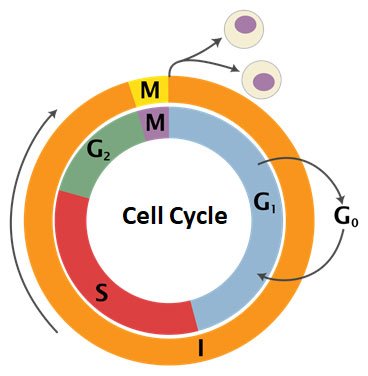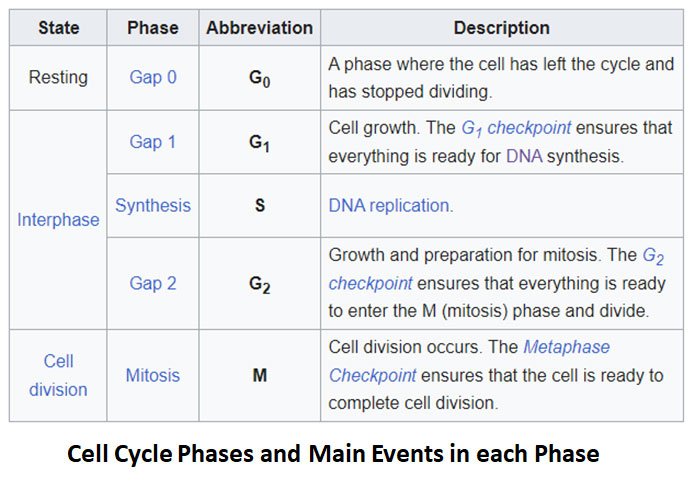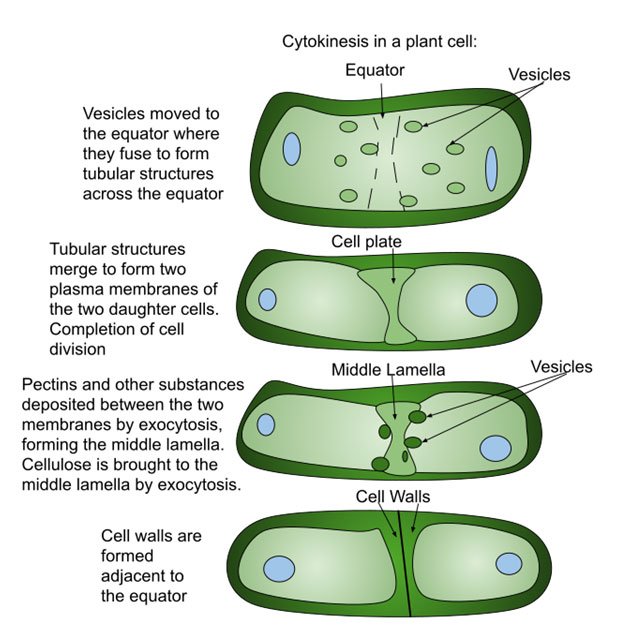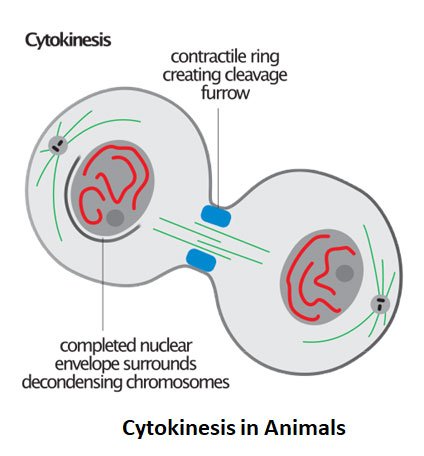The cell cycle is a series of events that take place in a cell leading to its growth, replication, and division into two daughter cells. It is divided into two major phases: interphase and the M phase (mitosis or meiosis). Interphase is further divided into the G1, S, and G2 phases, where the cell grows and duplicates its DNA. The M phase includes mitosis (or meiosis in reproductive cells), where the cell’s nucleus divides, and cytokinesis, where the cytoplasm splits. Cell division is essential for growth, repair, and reproduction in living organisms. Understanding the cell cycle and division is crucial for learning how cells function and how errors can lead to diseases like cancer. This article is about cell cycle and cell division class 11 questions and answers. You can download the questions as PDF from the download link provided below the post.
Molecular Biology Notes | Molecular Biology PPTs | Molecular Biology MCQs
Cell Cycle and Cell Division Class 11 Questions and Answers
1. What are the two main phases of the cell cycle, and what happens in each?
The two main phases of the cell cycle are interphase and the M phase. Interphase is the preparation phase, where the cell grows (at G1), duplicates its DNA (at S), and prepares for division (at G2). The M phase involves mitosis (or meiosis) and cytokinesis, where the cell divides into two daughter cells. Mitosis occurs in somatic cells, while meiosis occurs in reproductive cells.

Cell_Cycle_2.svg: *Cell_Cycle_2.png:Zephyris at en.wikipediaderivative work: Beaoderivative work: Histidine, CC BY-SA 3.0, via Wikimedia Commons
2. What happens during the S phase of the cell cycle?
During the S phase, DNA replication occurs. Each chromosome is duplicated, resulting in two identical sister chromatids that are attached at the centromere. This ensures that each daughter cell will receive an identical set of genetic material after division. The cell also begins to synthesize proteins necessary for chromosome packaging and segregation.

Source: Wikipedia
3. How is mitosis different from meiosis in terms of function and outcome?
Mitosis results in two genetically identical daughter cells, each with the same number of chromosomes as the parent cell. It is responsible for growth, tissue repair, and asexual reproduction. Meiosis, on the other hand, produces four genetically diverse gametes (sperm or egg cells) with half the chromosome number of the parent cell (reduced to haploid number of chromosomes). Meiosis is important for sexual reproduction and increases genetic diversity. Mitosis is equatorial division whereas meiosis is reduction division.

MathildaBrinton, CC BY-SA 4.0, via Wikimedia Commons
4. What is cytokinesis, and how does it differ in plant and animal cells?
Cytokinesis is the process that divides the cytoplasm of a parent cell into two daughter cells. In animal cells, cytokinesis occurs through the formation of a cleavage furrow that pinches the cell into two. In plant cells, due to the rigid cell wall, a cell plate forms between the two daughter cells, which eventually becomes a new cell wall. This difference is due to the structural variations between plant and animal cells.

David O Morgan, Attribution, via Wikimedia Commons
5. What are the key events during prophase in mitosis?
During prophase, the chromatin condenses into visible chromatin, and each chromatin consists of two sister chromatids. The nuclear envelope begins to break down, and the spindle fibers start to form from the centrosomes. The centrosomes move to opposite poles of the cell, and spindle fibers attach to the centromeres of the chromosomes. This prepares the cell for the alignment of chromosomes during metaphase.
6. Why are checkpoints important in the cell cycle?
Checkpoints ensure that the cell cycle progresses in an orderly manner and that errors, such as DNA damage, are corrected before the cell moves to the next phase. The G1 checkpoint checks for cell size and DNA integrity, the G2 checkpoint ensures DNA replication is complete, and the spindle checkpoint ensures chromosomes are properly aligned. These checkpoints help prevent abnormal cell division, which can lead to cancer or other diseases.

7. What is the role of spindle fibers in mitosis?
Spindle fibers are responsible for separating sister chromatids during mitosis. They attach to the centromeres of the chromosomes during metaphase and pull the chromatids apart during anaphase. The proper functioning of spindle fibers ensures that each daughter cell receives an equal and accurate number of chromosomes. Without spindle fibers, chromosome segregation would be faulty, leading to genetic disorders.
8. What is the G1 phase, and why is it important in the cell cycle?
The G1 phase is the first stage of interphase, where the cell grows and performs its normal functions. During this phase, the cell increases in size, produces RNA, and synthesizes proteins needed for DNA replication. The G1 phase is important because it ensures the cell is ready for DNA synthesis and that it has the resources and energy to support cell division.
9. What is the significance of homologous chromosomes in meiosis?
Homologous chromosomes are pairs of chromosomes, one inherited from each parent, that carry the same genes in the same order but may have different alleles. In meiosis, homologous chromosomes pair up during prophase I and undergo crossing over, where they exchange genetic material. This process increases genetic variation in the offspring, which is essential for evolution and adaptation.
10. How does the cell ensure that each daughter cell receives the correct number of chromosomes during cell division?
During mitosis, spindle fibers attach to the centromeres of chromosomes and ensure that sister chromatids are pulled to opposite poles of the cell during anaphase. In meiosis, homologous chromosomes and sister chromatids are carefully segregated across two divisions to ensure each gamete receives half the number of chromosomes. Checkpoints during the cell cycle also monitor the attachment of spindle fibers to ensure accurate chromosome segregation.
<<< Back to Molecular Biology Notes
I hope you found this Questions and Answers on Cell Cycle and Cell Division is informative and beneficial. Your feedback and comments would be greatly appreciated. Whether you have suggestions, questions, or thoughts to share, I would be delighted to hear from you. Engaging with your comments helps me continue to produce high-quality content in Biology. Please feel free to leave a comment below. Thank you for your support.
Regards: Admin, EasyBiologyClass
| You may also like NOTES in... | ||
|---|---|---|
| BOTANY | BIOCHEMISTRY | MOL. BIOLOGY |
| ZOOLOGY | MICROBIOLOGY | BIOSTATISTICS |
| ECOLOGY | IMMUNOLOGY | BIOTECHNOLOGY |
| GENETICS | EMBRYOLOGY | PHYSIOLOGY |
| EVOLUTION | BIOPHYSICS | BIOINFORMATICS |
Want to read offline? download full PDF: Cell Cycle and Cell Division
